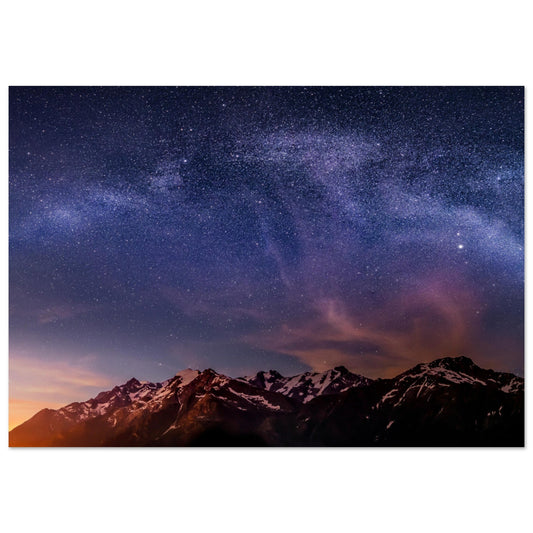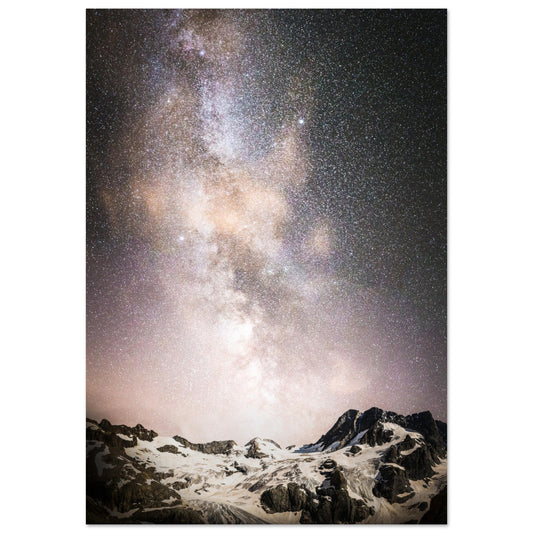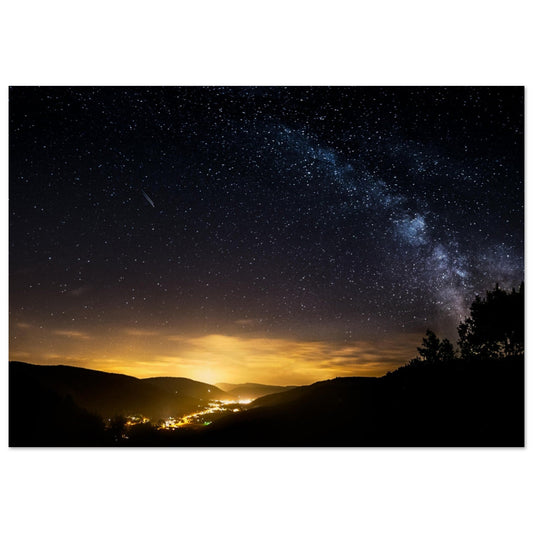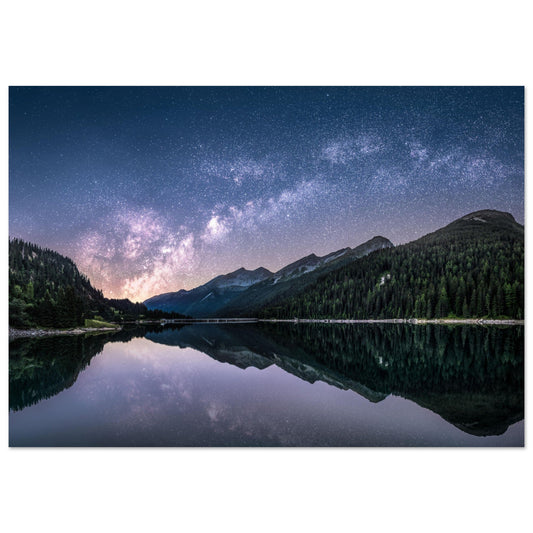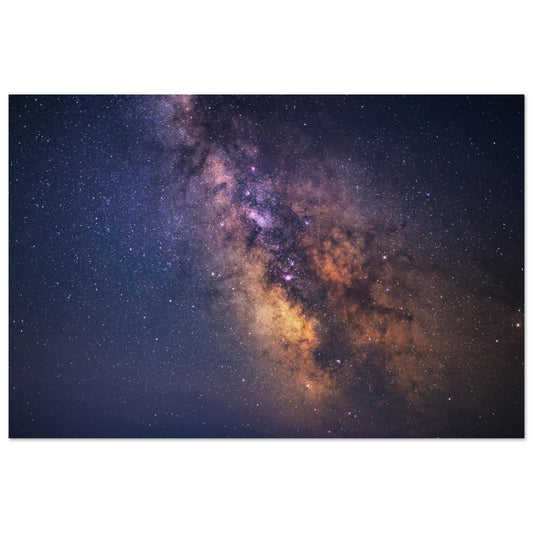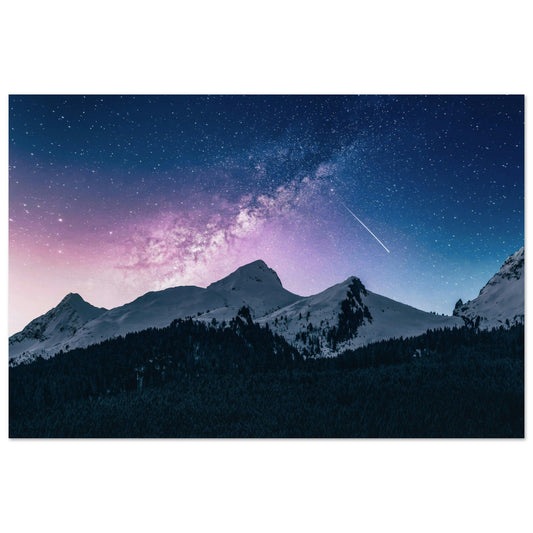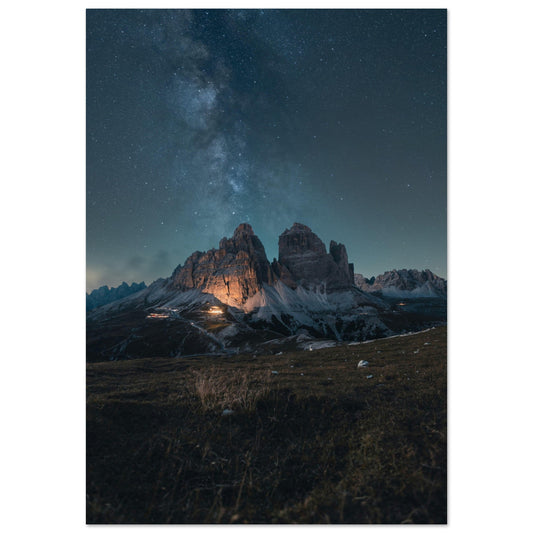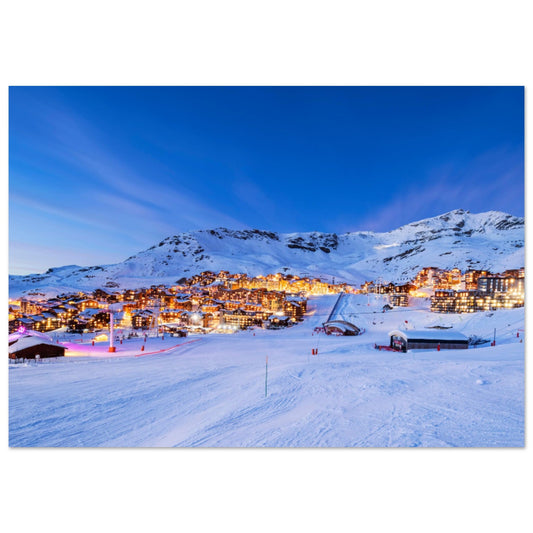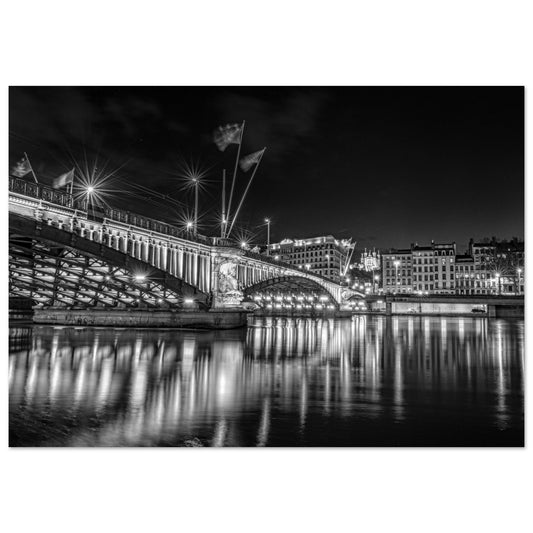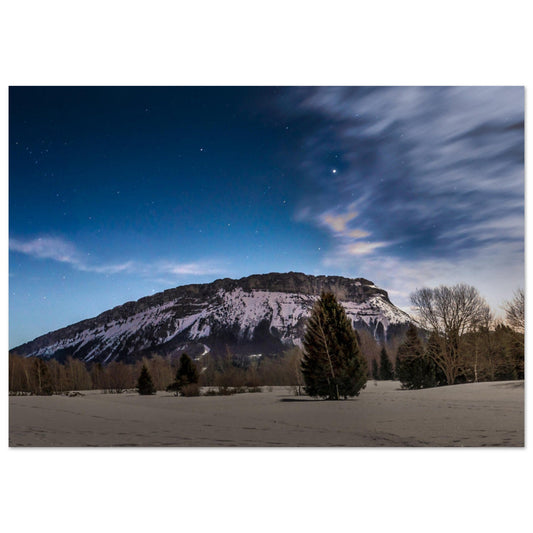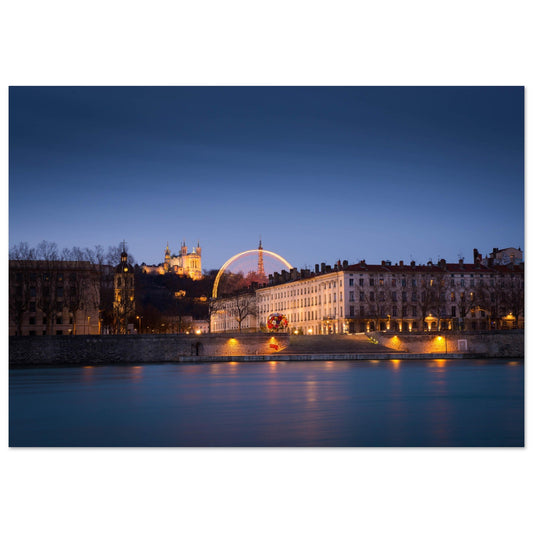

Dear mountain photography enthusiasts,
Do you dream of capturing the majesty of snow-capped peaks, lush green valleys and crystal clear lakes under the starry sky? Night photography and the Milky Way are exciting fields that will allow you to explore the celestial universe with your camera. In this guide, I will reveal to you the secrets to successful night shots and immortalizing the Milky Way.
Some photos of the Milky Way :
-
Photo of a Milky Way above Mont-Blance from Les Contamines-Montjoie
Vendor:Tableaux photos aluminium de montagneRegular price From €69,00 EURRegular priceUnit price / per -
Photo of a Milky Way above Les Bans and Pointe de la Pilatte, Ecrins massif
Vendor:Tableaux photos aluminium de montagneRegular price From €69,00 EURRegular priceUnit price / per€0,00 EURSale price From €69,00 EUR -
Photo of a Milky Way in the Vosges
Vendor:Tableaux photos aluminium de montagneRegular price From €69,00 EURRegular priceUnit price / per -
Photo of a Milky Way over a lake in the Dolomites
Vendor:Tableaux photos aluminium des DolomitesRegular price From €69,00 EURRegular priceUnit price / per -
Photo of the Milky Way in the dark night
Vendor:Tableaux photos aluminium de montagneRegular price From €69,00 EURRegular priceUnit price / per -
Photo of the Milky Way above the Cimon di Val Moena, Italy
Vendor:Tableaux photos aluminium de montagneRegular price From €69,00 EURRegular priceUnit price / per -
Photo of the Milky Way on the Tre Cime di Lavaredo, Italy
Vendor:Tableaux photos aluminium de montagneRegular price From €69,00 EURRegular priceUnit price / per
The Milky Way: Our Galaxy

The Milky Way is our galaxy, containing all the stars we see in the sky. If you look into its center on a dark night, you will see a luminous cloud of dust and stars. This cloud regularly inspires astrophotography , also called night sky photography.
Essential Equipment

image stability
A Tripod :
- Do not rely on the ground or stones to hold your device. Invest in a stable tripod for long exposures without shake.
- Choose an ultralight tripod with a height suited to your comfort.
- Protect it from the wind with a backpack or other weight.

precision of settings
The camera :
- Your camera must have a manual mode to set the exposure correctly.
- Exposure times for the Milky Way are measured in tens of seconds, so make sure your camera can handle this.
- A Bridge or Reflex is recommended for optimal results.
Essential Settings
-
Development :
- Use manual focus to avoid blur.
- Focus on the stars or something in the foreground.
-
Shutter Speed :
- To photograph the Milky Way, use long exposures (10 to 30 seconds).
- Experiment with different durations to find the right balance.
-
ISOs :
- Go one or two steps below the maximum value (usually 6400) to avoid noise.
- Get out of the big city to avoid light pollution.
-
Shoot in RAW :
The RAW format gives you more flexibility when editing.
-
Open the Diaphragm :
Use a wide aperture (f/2.8 or wider) to capture more light.
Composition and Creativity
Experiment with bold, artistic composition to capture the beauty of the Milky Way. Tools and tips for stunning photos.
- Horizon Position : For mountain landscapes, place the horizon on the upper line if the sky is dramatic, or on the lower line if the foreground is interesting.
- Foreground Elements : Look for rocks, trees or streams to anchor your image.
- Leading Lines : Use natural lines (rivers, trails, ridges) to guide the eye toward the main subject.
By applying these techniques, you will create magical images that reveal celestial beauty. So, take out your tripod, set up your camera and let yourself be carried away by the Milky Way!
Happy shooting! 📸✨
Discover the most beautiful images of the Alps at night :
Transform your interior with our aluminum photo paintings , highlighting the magic of mountain nights .
Immerse yourself in a universe where the peaks rise majestically under the stars. Our online store offers you an exquisite selection of works capturing the purity and serenity of nocturnal nature. Our paintings are carefully printed on high-quality aluminum, providing exceptional durability and vibrant colors.
Perfect for mountain enthusiasts and interior decoration enthusiasts looking for originality. Explore our collection to discover the most beautiful images of the night , enhancing your living space with dazzling panoramas. With our online sales service, redefine your decor with ease and elegance.
Find inspiration in the captivating shades of night and bring your interior to life. Treat yourself to the exclusivity of a unique decoration, where each painting tells a story. For a warm and authentic atmosphere, opt for our night aluminum photo paintings, creating a soothing and contemplative atmosphere.
Feel the emotion of nocturnal landscapes in the heart of your home. Let yourself be seduced by the timeless beauty of the mountains illuminated by the stars. With our online store, make your interior a haven of peace where nature meets art.
Order now and transform your decor with aluminum photo boards that evoke the grandeur of mountain nights.
-
Photo of the Milky Way in the dark night
Vendor:Tableaux photos aluminium de montagneRegular price From €69,00 EURRegular priceUnit price / per -
Photo of the shadow of a fox at dusk
Vendor:Tableaux photos aluminium de montagneRegular price From €69,00 EURRegular priceUnit price / per -
Night photo on Weißenbach, Ahrntal, South Tyrol, Italy
Vendor:Tableaux photos aluminium de montagneRegular price From €69,00 EURRegular priceUnit price / per -
Photo Val Thorens at night, Savoie
Vendor:Tableaux photos aluminium de montagneRegular price From €69,00 EURRegular priceUnit price / per -
Photo of the Aiguille du Midi and the moon - Black & White
Vendor:Tableaux photos aluminium de montagneRegular price From €69,00 EURRegular priceUnit price / per -
Photo of the Moede Anterne refuge at night
Vendor:Tableaux photos aluminium de montagneRegular price From €69,00 EURRegular priceUnit price / per -
Photo of the Lafayette bridge and the Rhone, Lyon - Black & White
Vendor:Tableaux photos aluminium de LyonRegular price From €69,00 EURRegular priceUnit price / per -
Photo of Margeriaz at night
Vendor:Tableaux photos aluminium de montagneRegular price From €69,00 EURRegular priceUnit price / per -
Photo of a Milky Way over a lake in the Dolomites
Vendor:Tableaux photos aluminium des DolomitesRegular price From €69,00 EURRegular priceUnit price / per -
Photo of a Milky Way in the Vosges
Vendor:Tableaux photos aluminium de montagneRegular price From €69,00 EURRegular priceUnit price / per -
Photo of Lyon at night: The Rhone, Bellcour and its Ferris wheel
Vendor:Tableaux photos aluminium de LyonRegular price From €69,00 EURRegular priceUnit price / per -
Photo of a Milky Way above Mont-Blance from Les Contamines-Montjoie
Vendor:Tableaux photos aluminium de montagneRegular price From €69,00 EURRegular priceUnit price / per -
Photo of Val Thorens and the Aiguille Peclet at night, Savoie
Vendor:Tableaux photos aluminium de montagneRegular price From €69,00 EURRegular priceUnit price / per -
Photo of a Milky Way above Les Bans and Pointe de la Pilatte, Ecrins massif
Vendor:Tableaux photos aluminium de montagneRegular price From €69,00 EURRegular priceUnit price / per€0,00 EURSale price From €69,00 EUR

